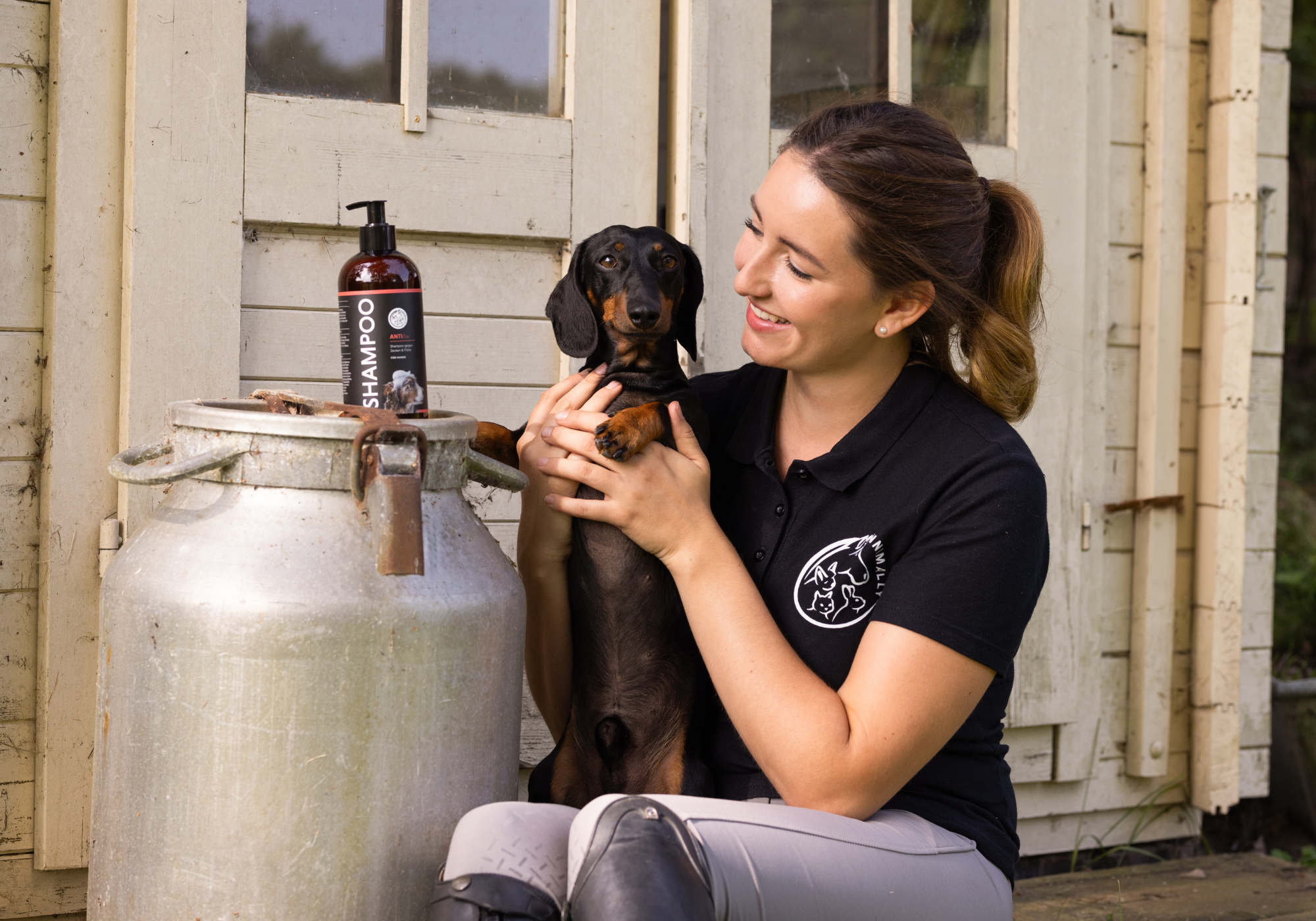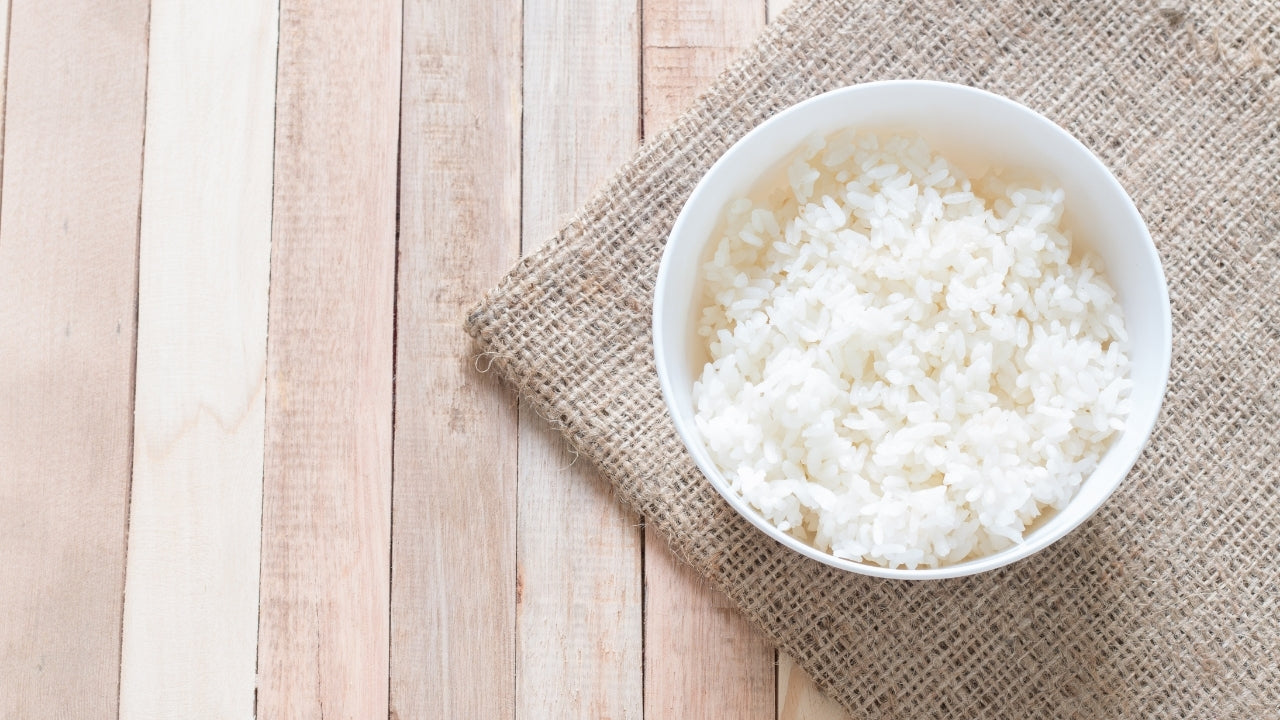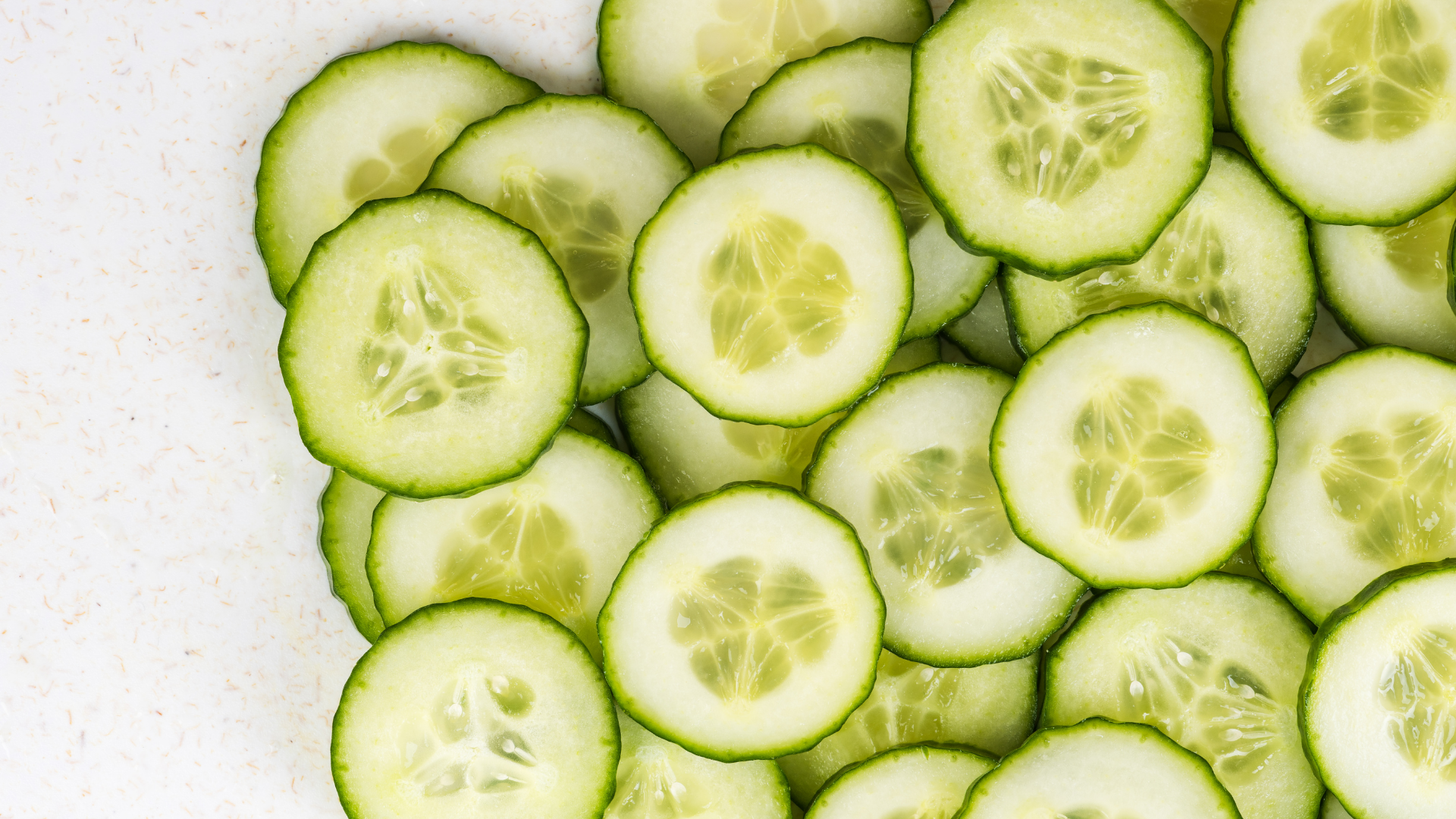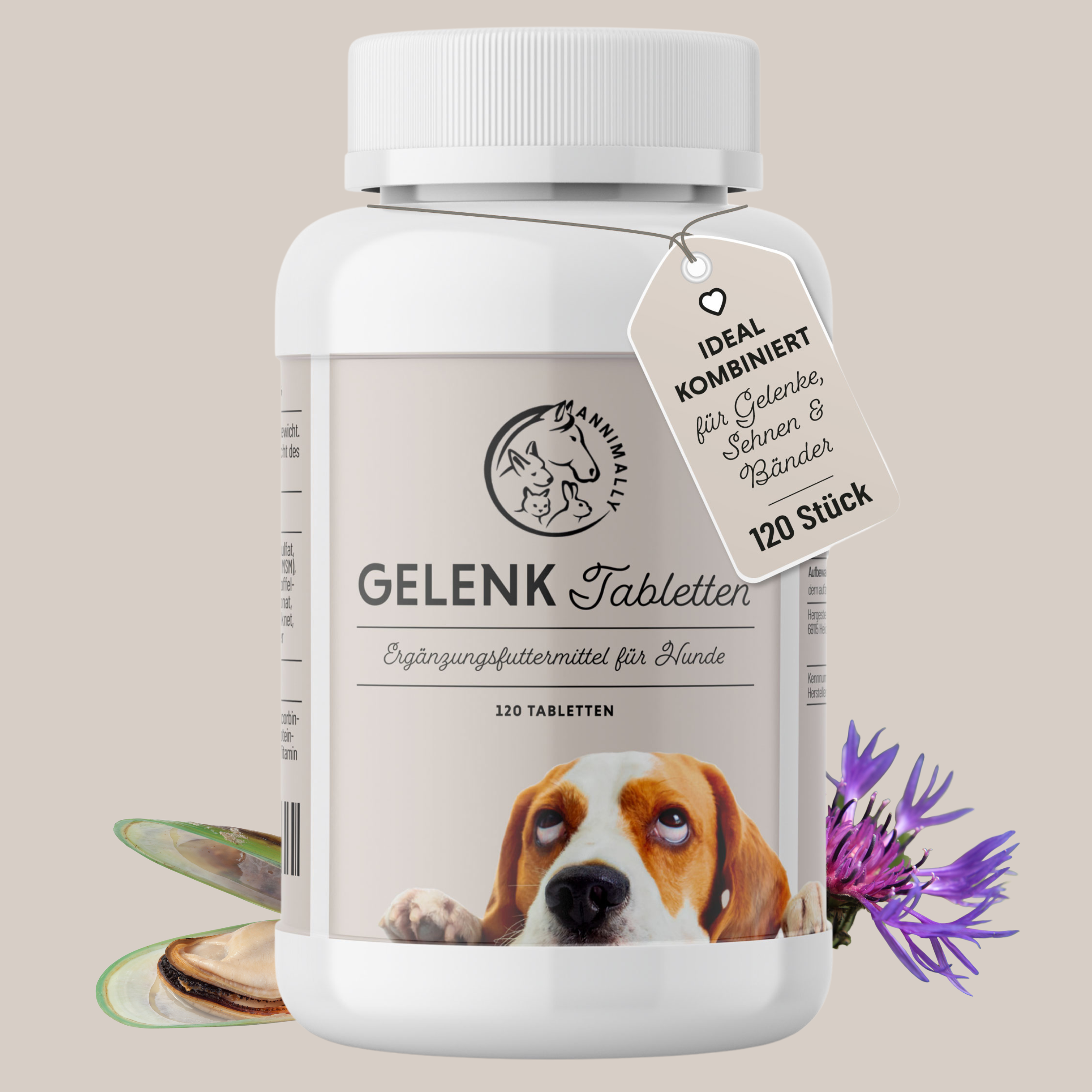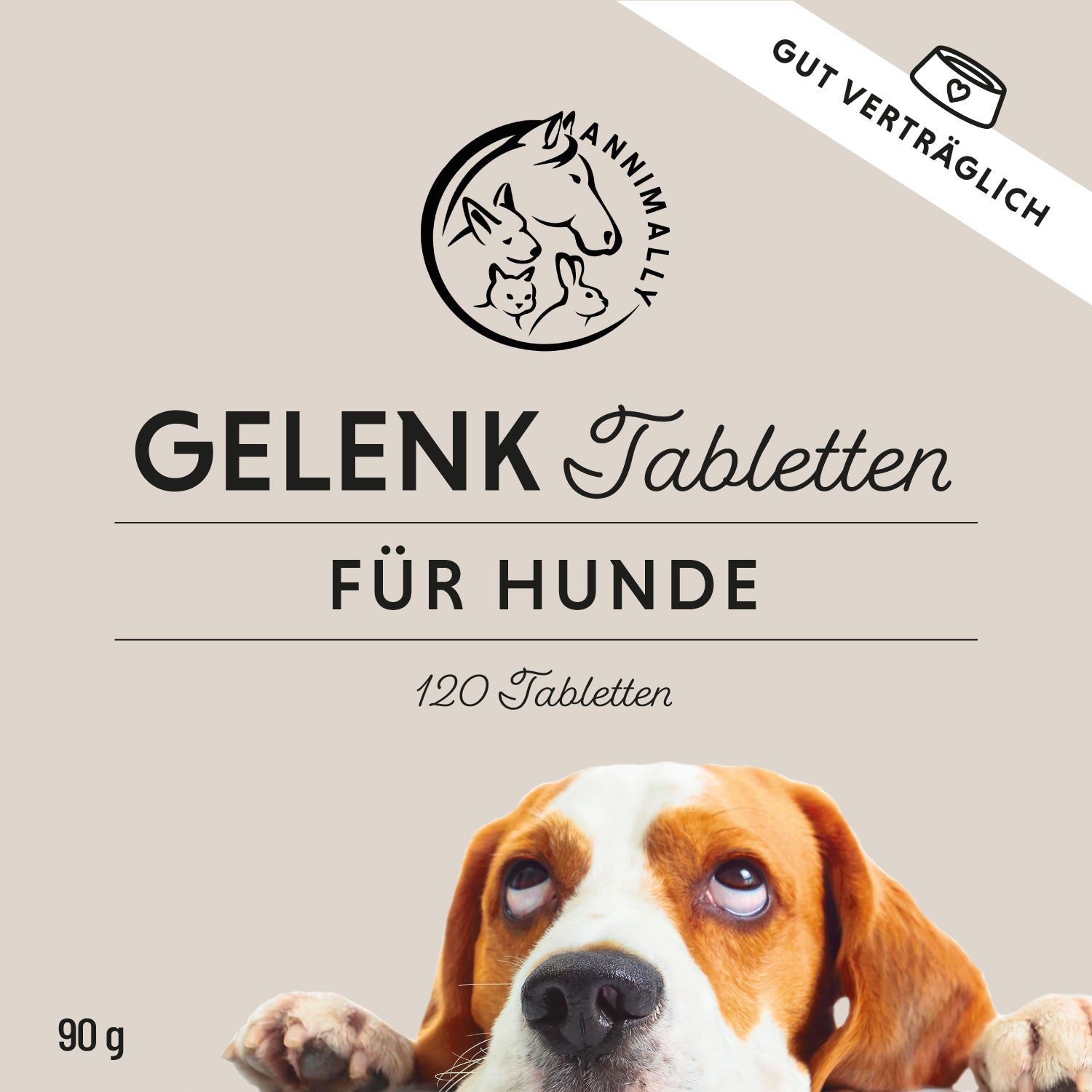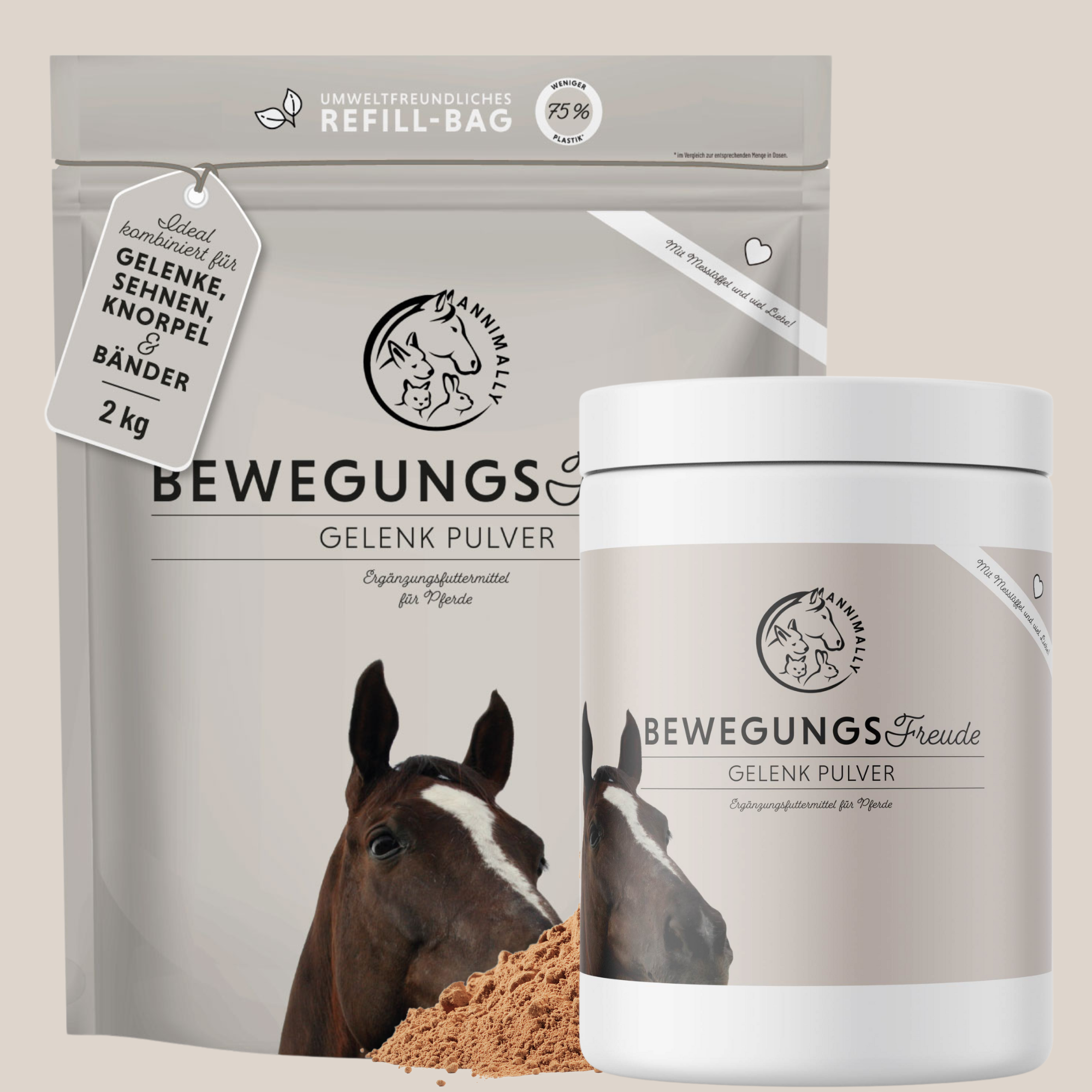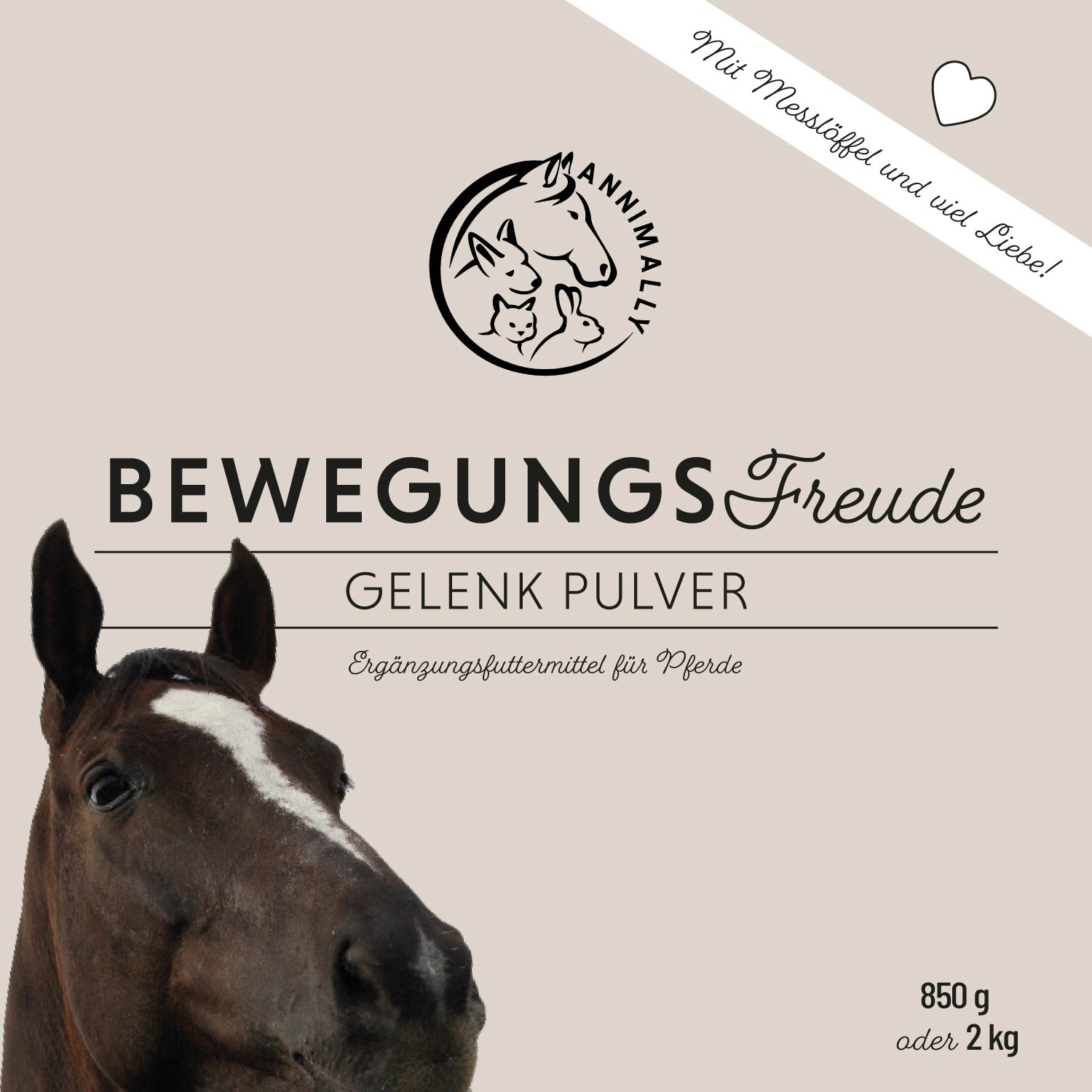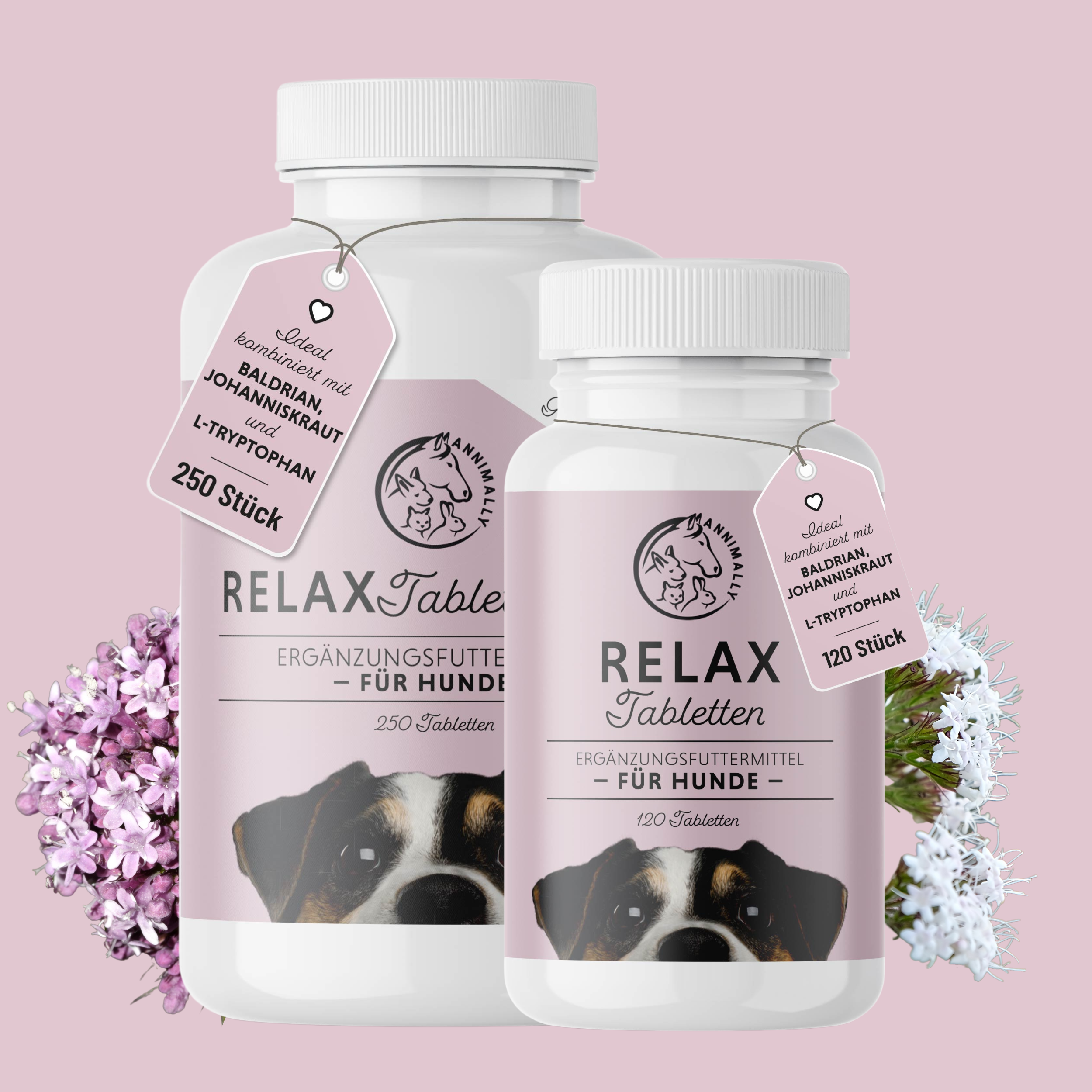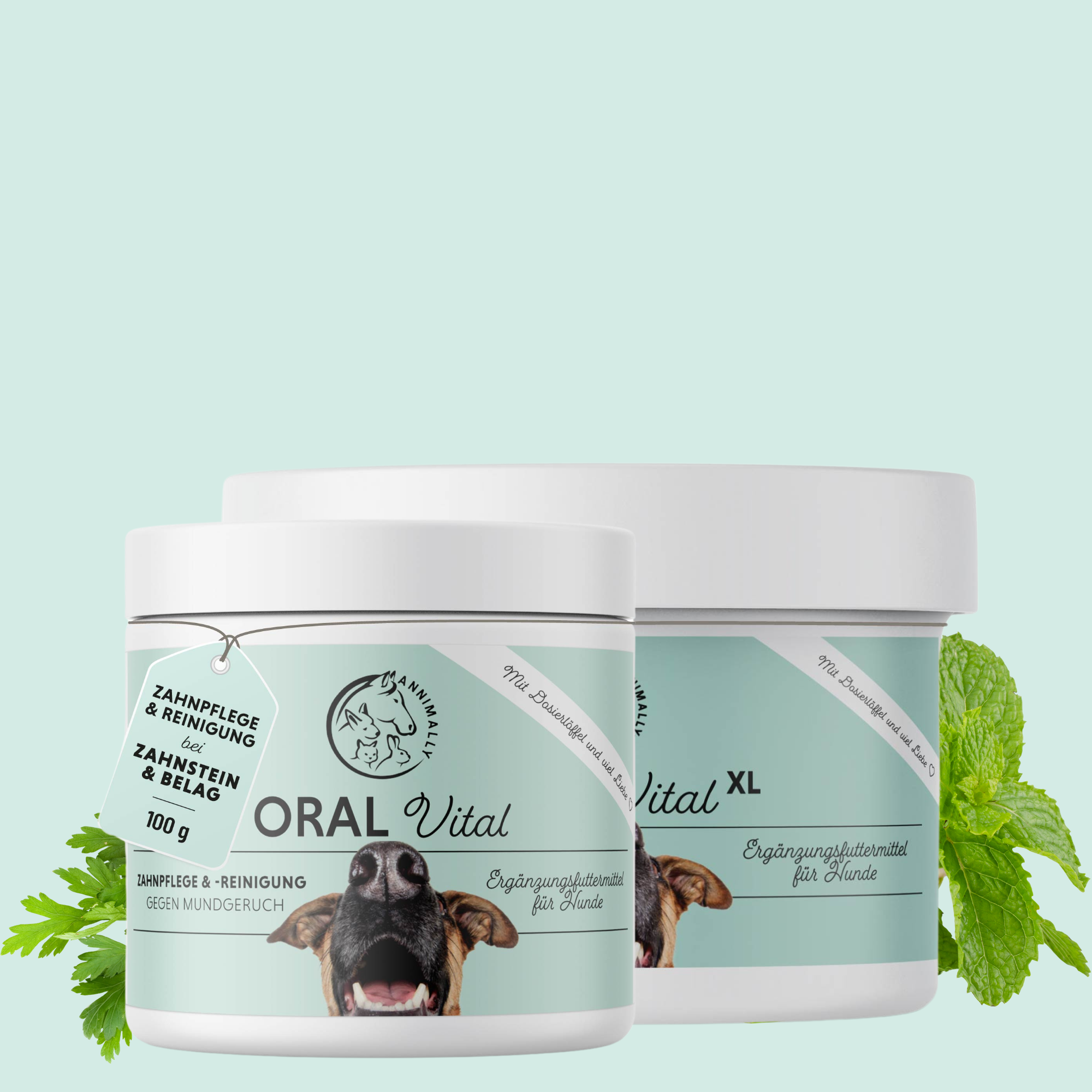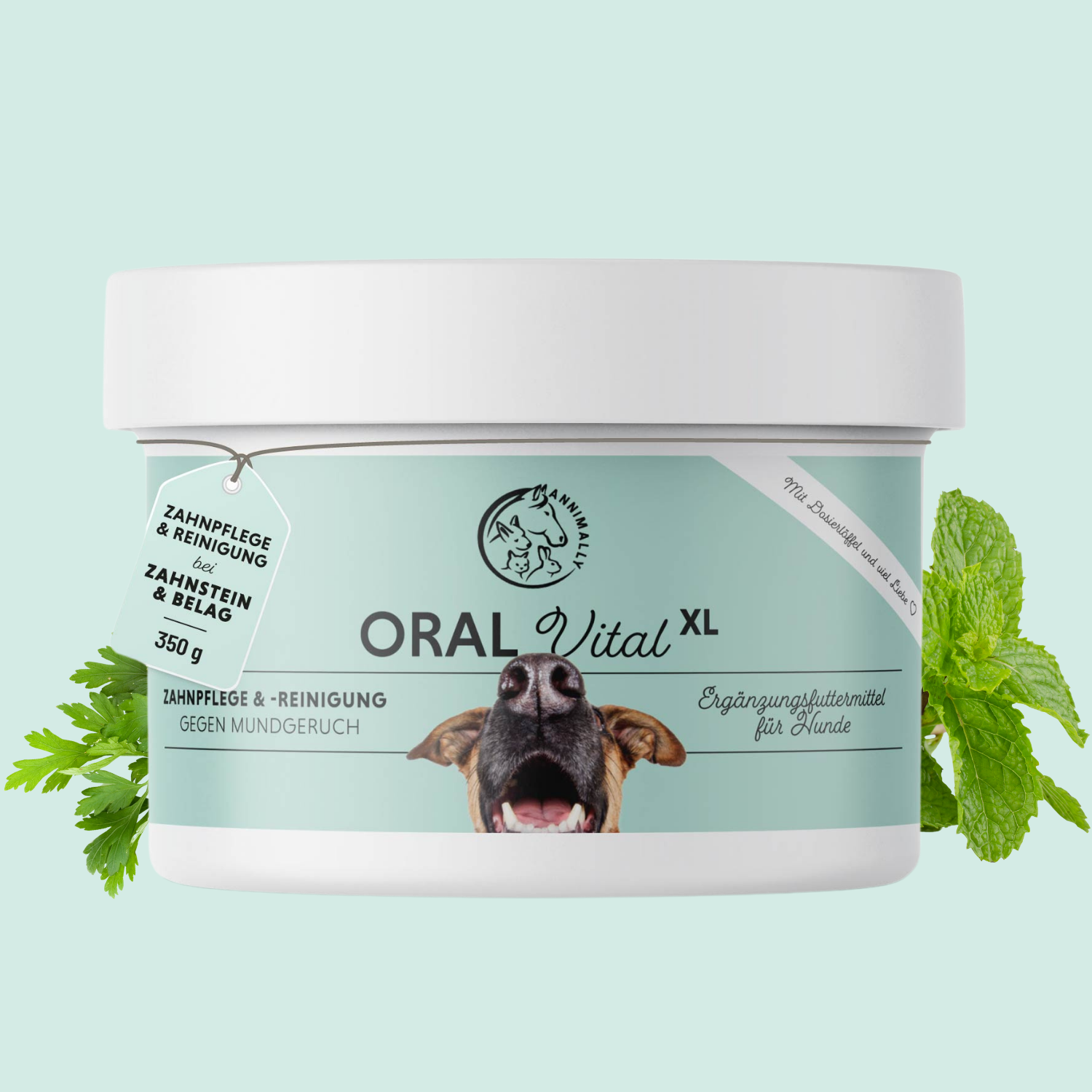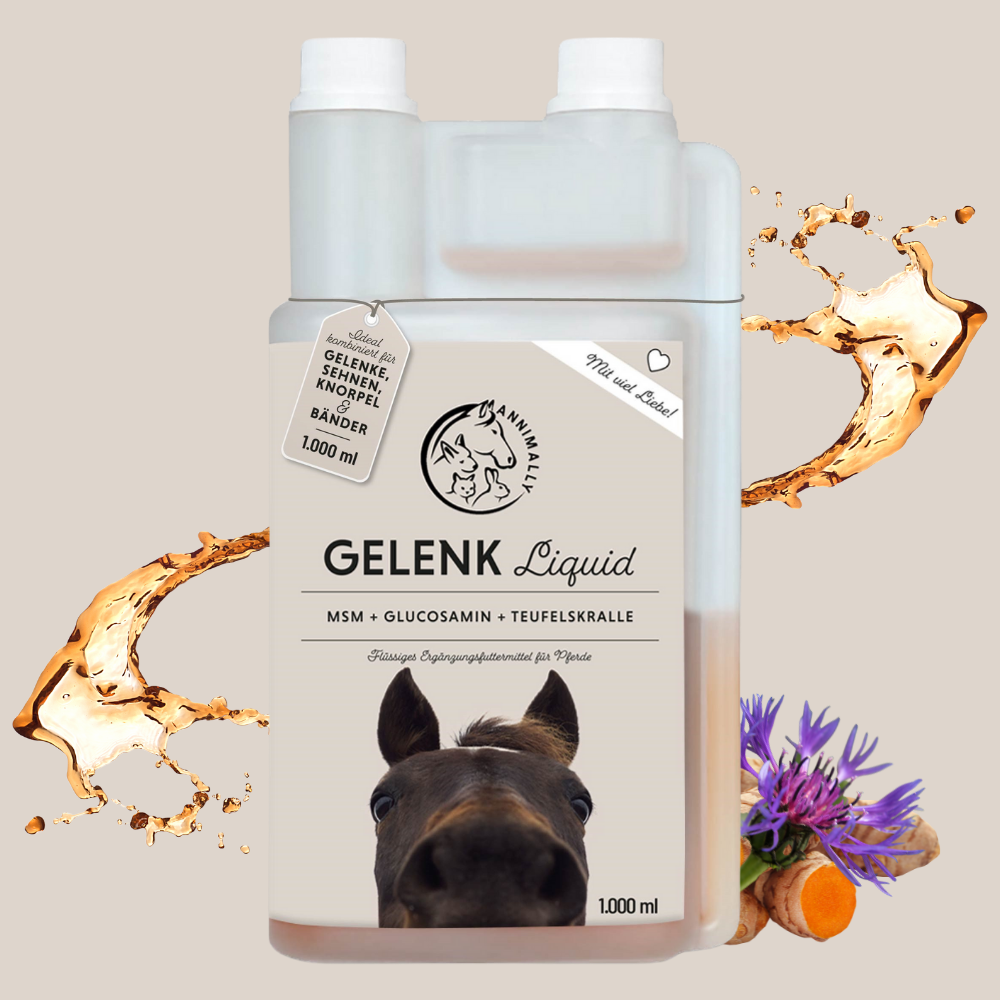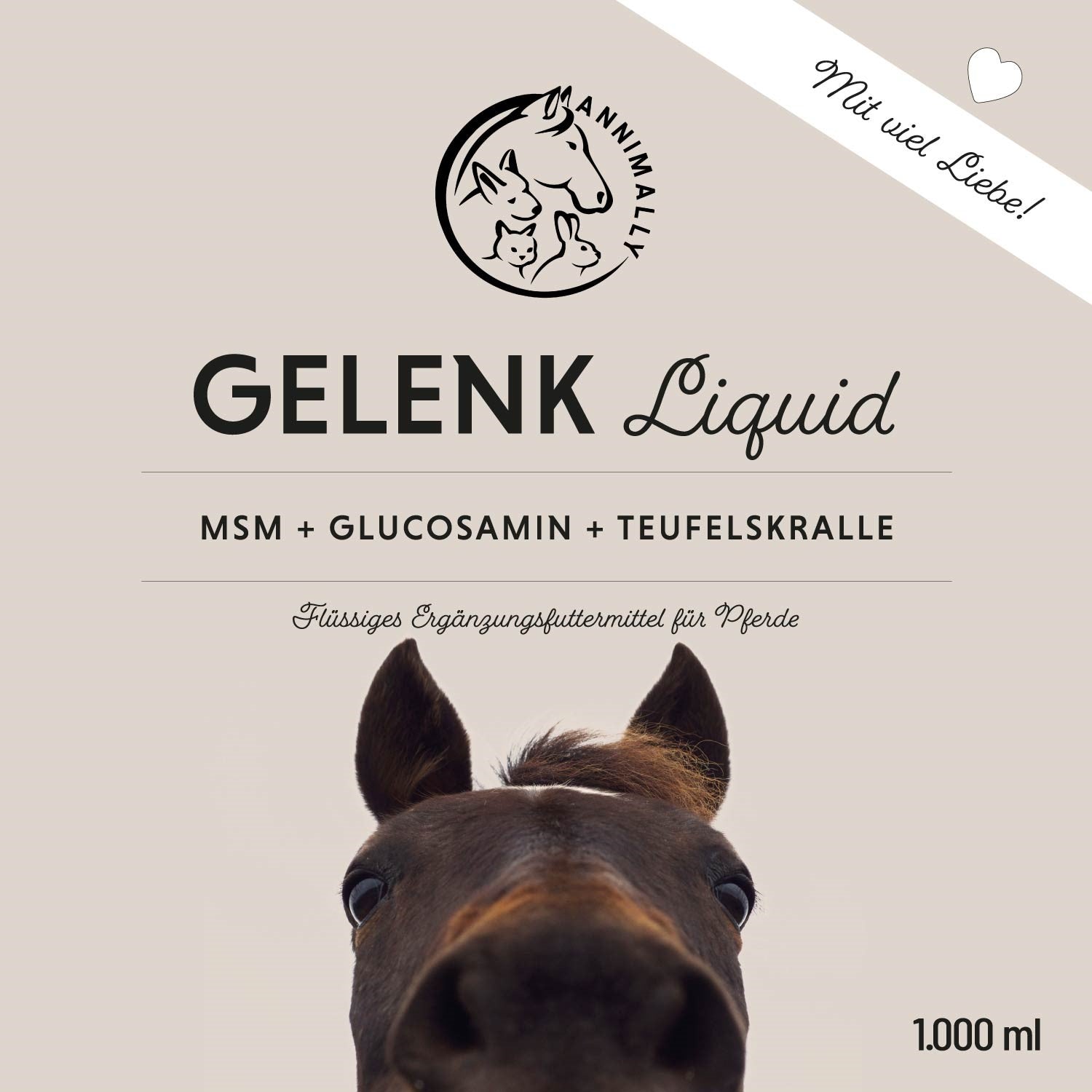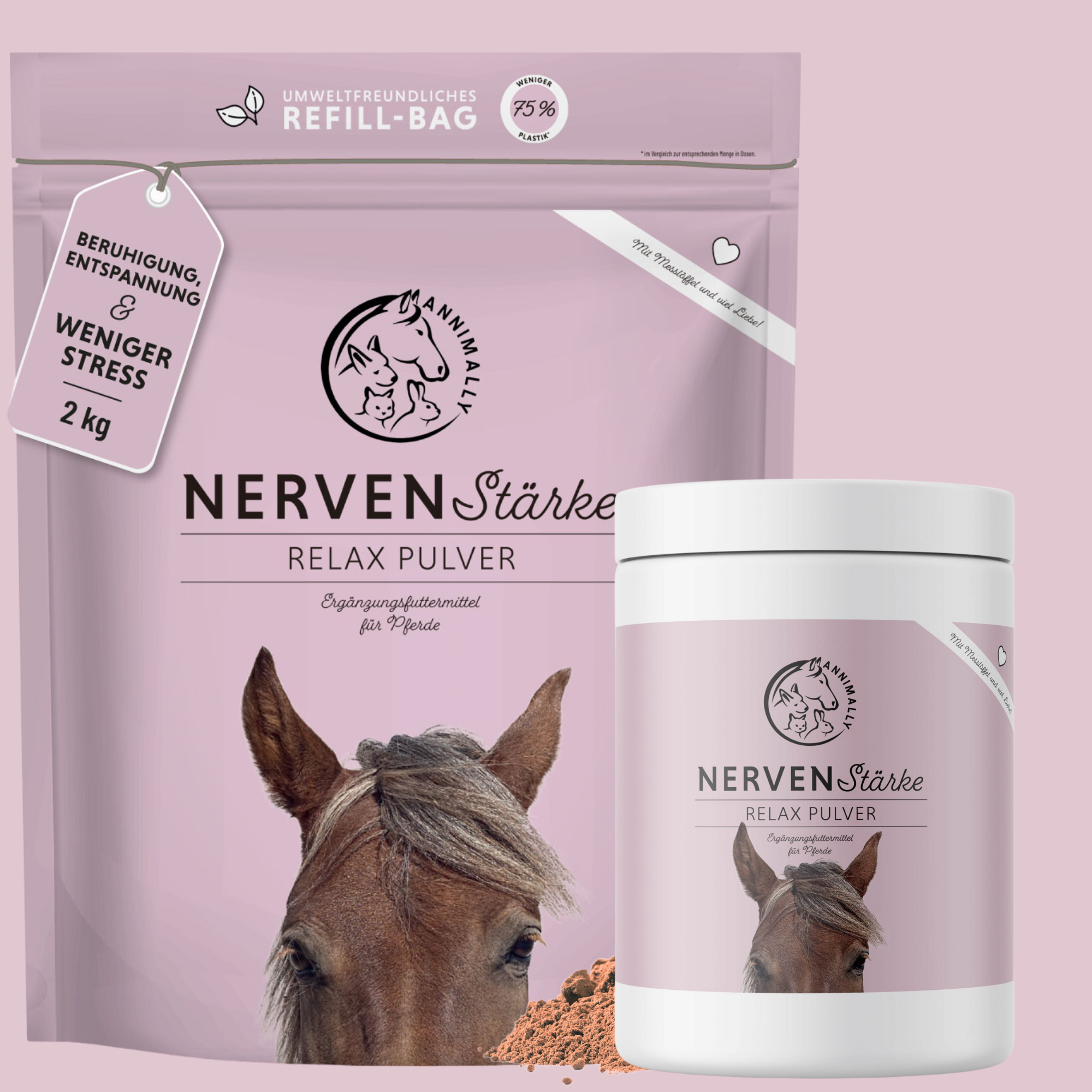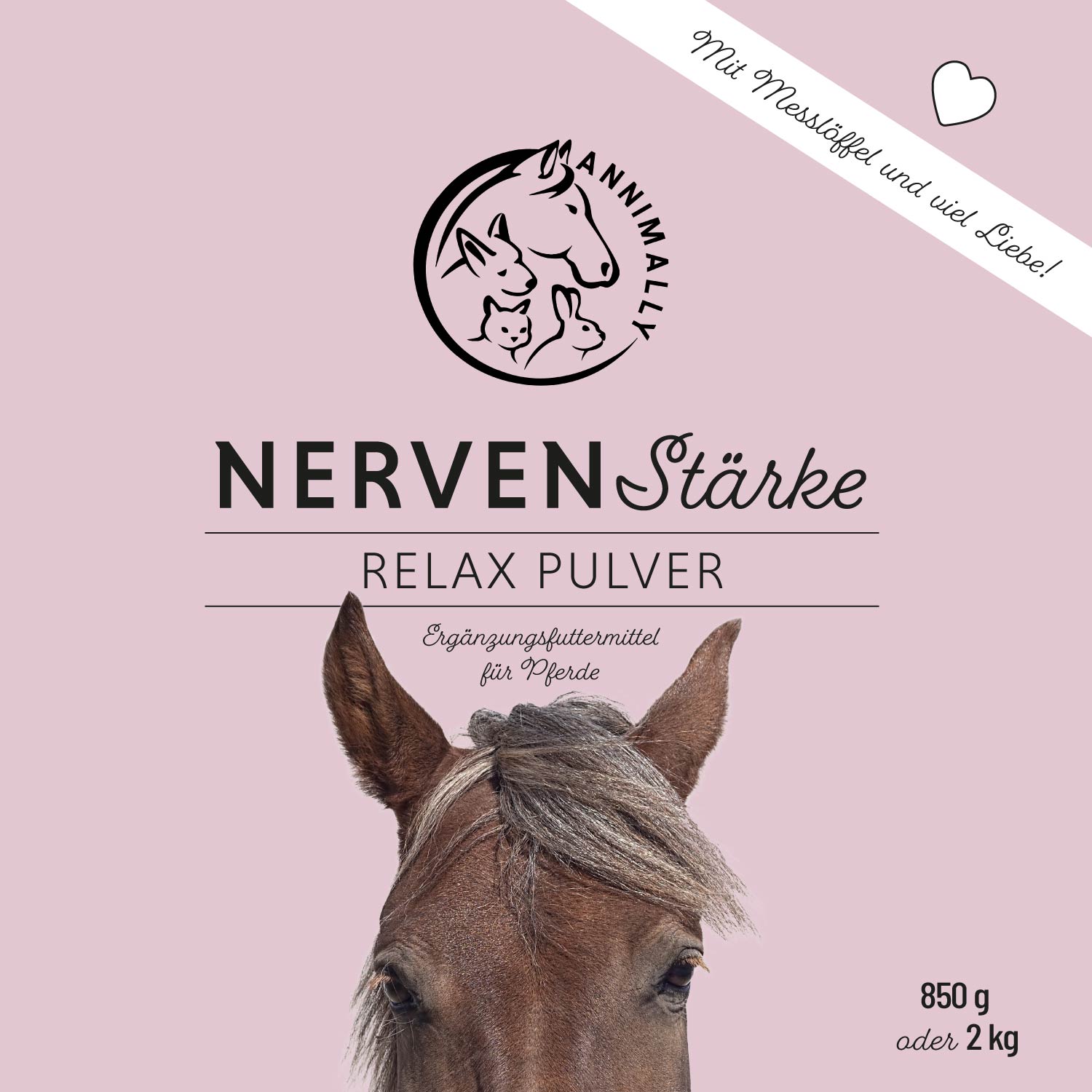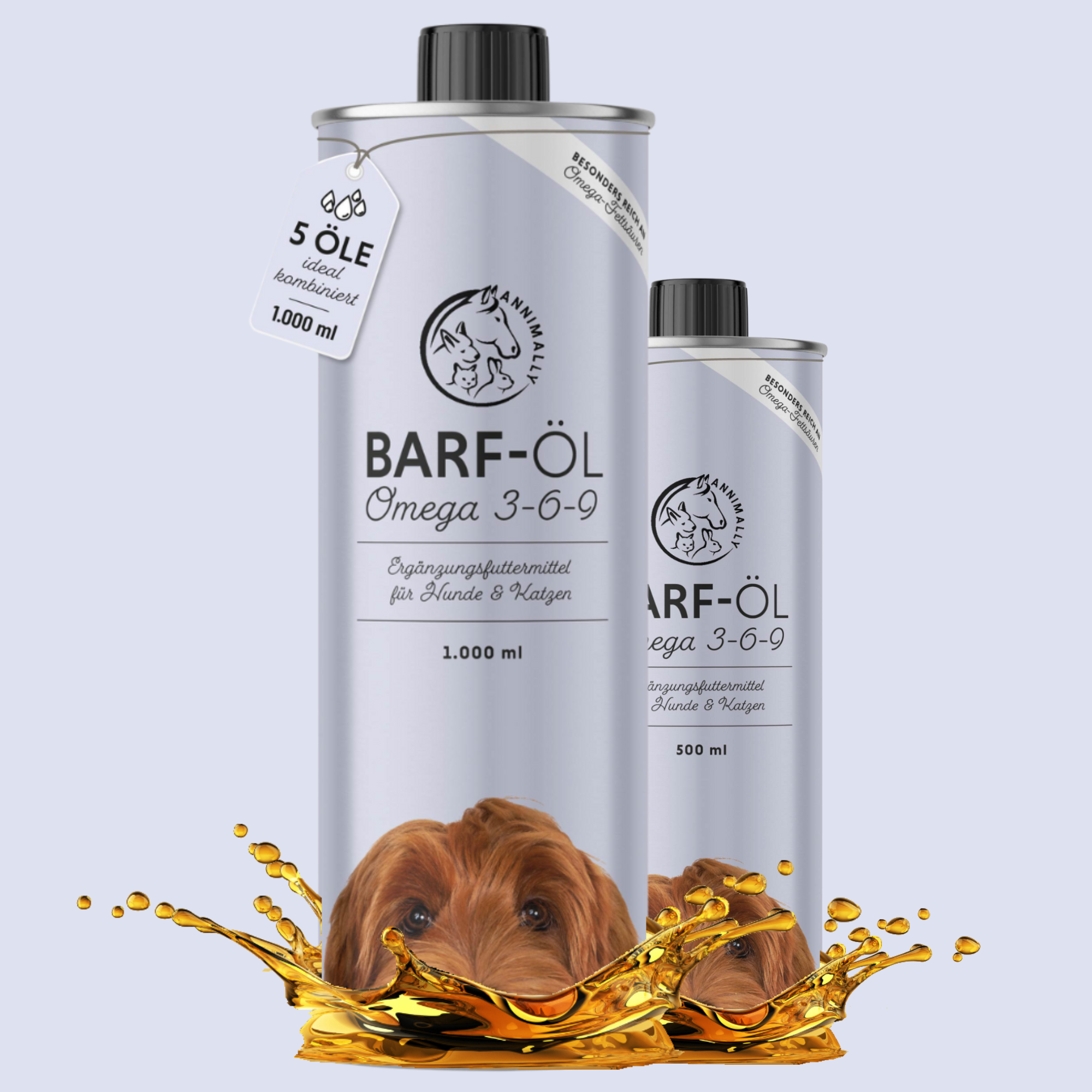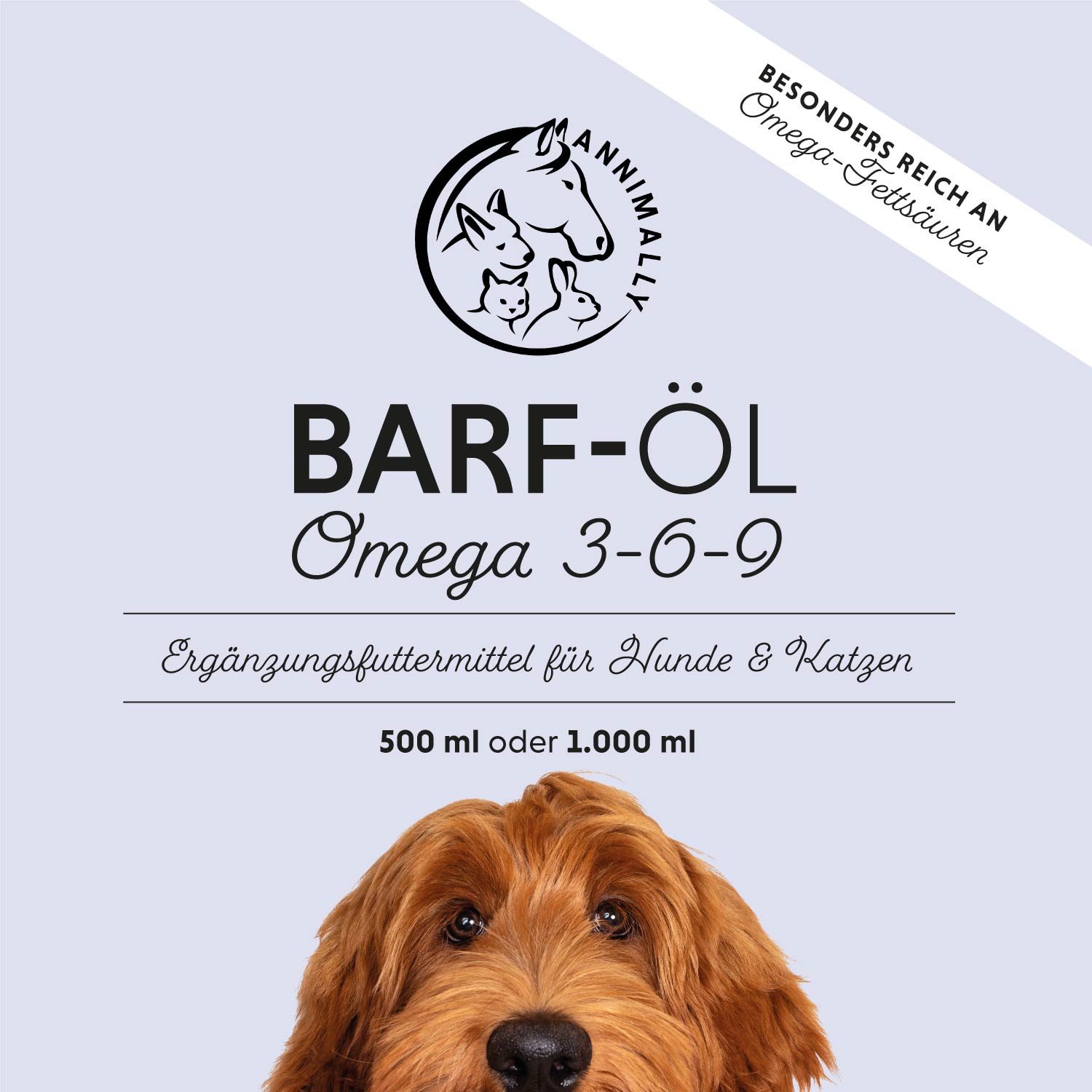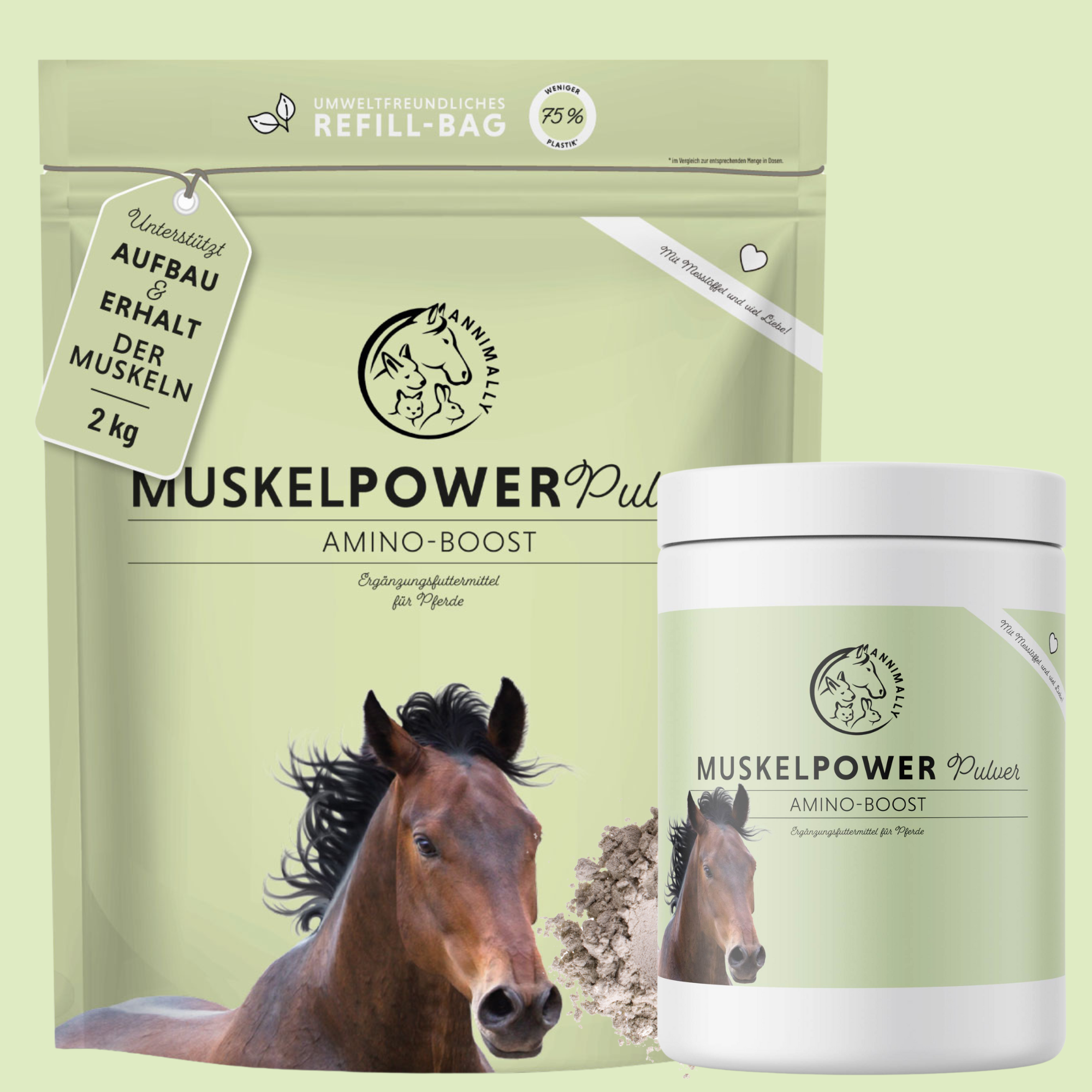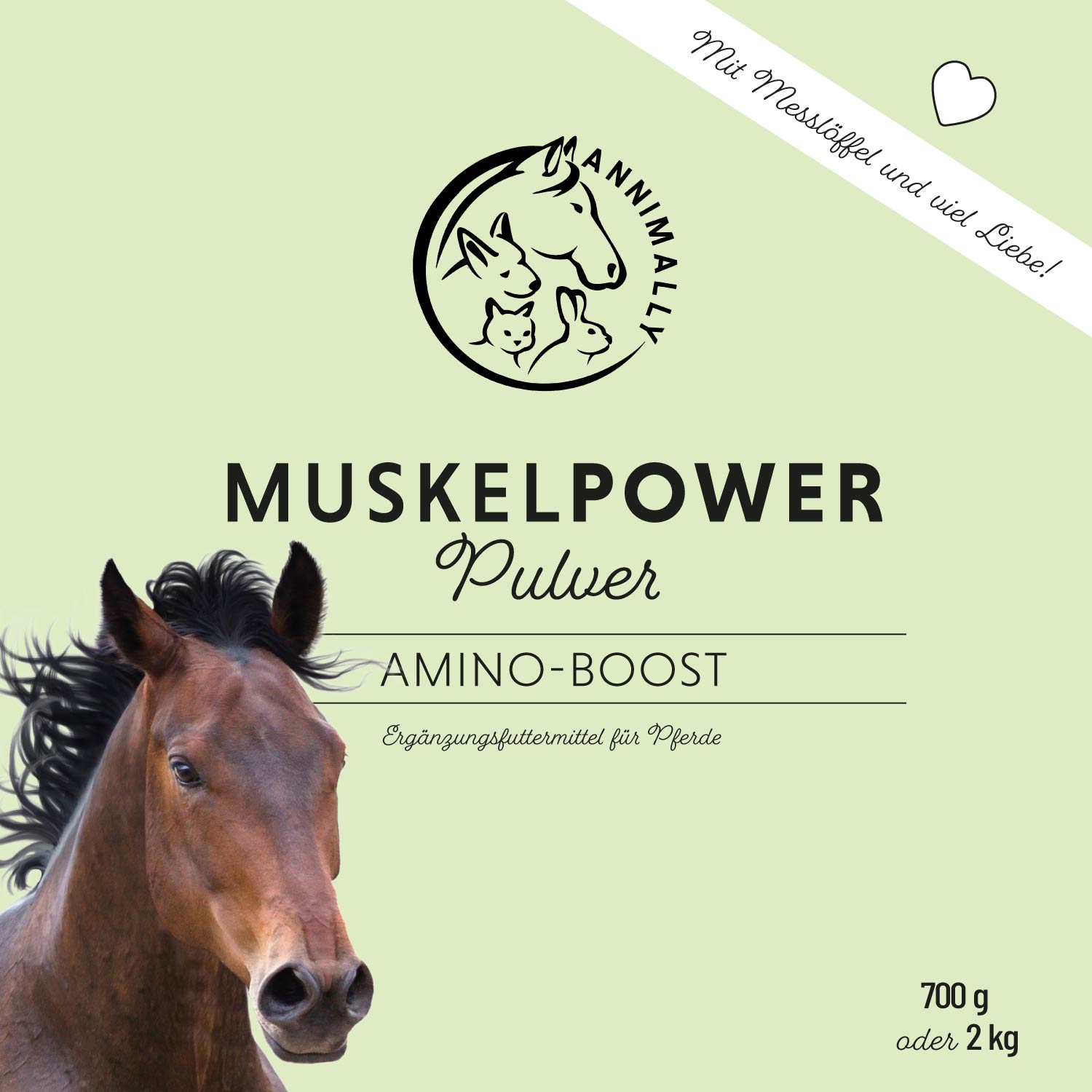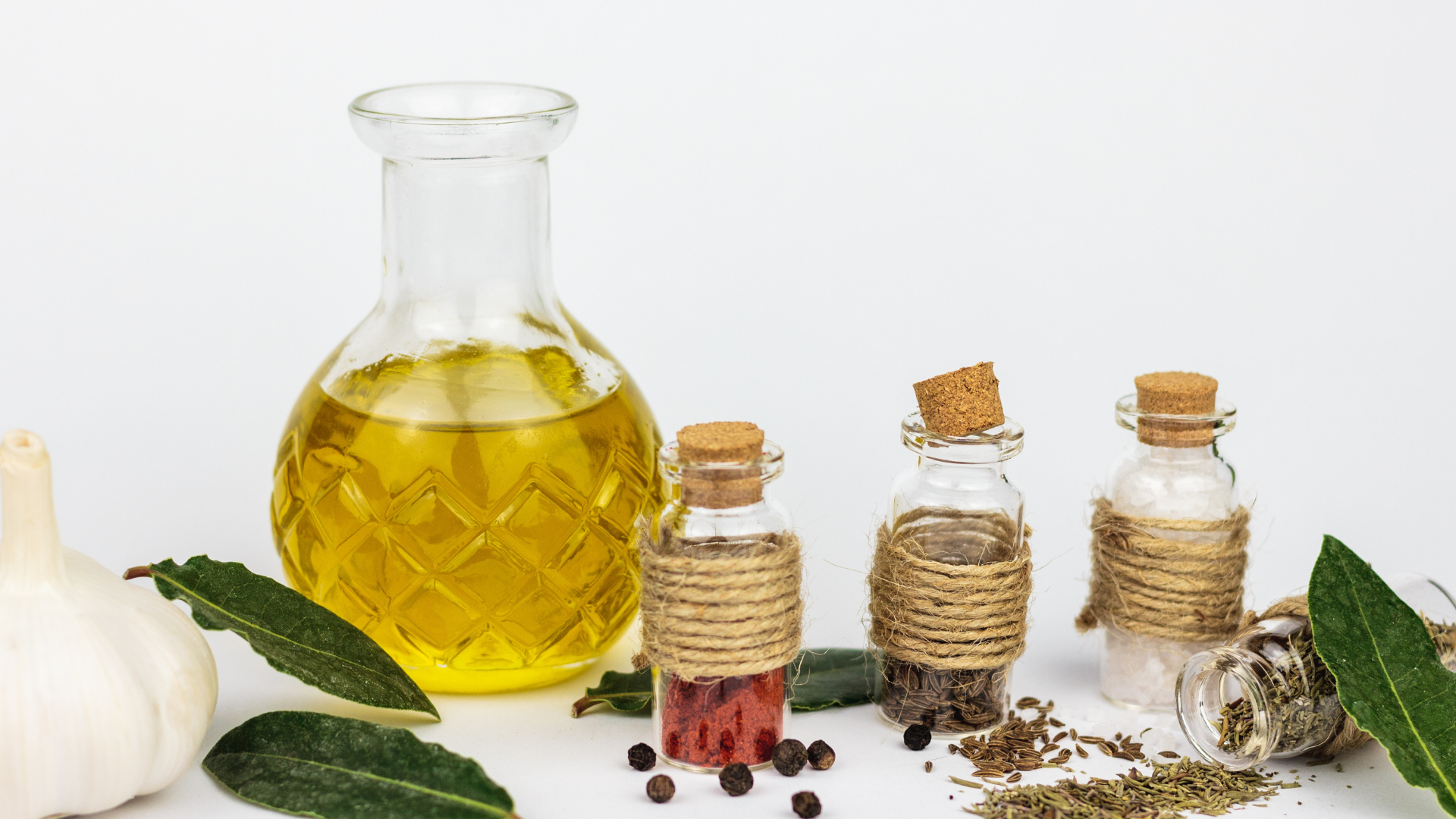
Which oil for dogs? Salmon oil, linseed oil & Co. in check
It's no longer just BARFers who regularly feed their dogs oil! The blob of oil is also becoming increasingly popular over dry or wet food. This is not surprising, after all, many oils contain large amounts of vitamins and unsaturated fatty acids. This makes salmon oil, olive oil, safflower oil and Co. real energy suppliers for your dog.
But which oil is the right one for my dog and how do I dose it correctly? Are there even oils that could harm the dog? It's not that easy to keep track!
Why Oil for Dogs?

Oils are mostly made up of fatty acids. These are particularly important for the health of your furry friend. In particular, the so-called polyunsaturated fatty acids, which are found in large amounts in some oils, are essential. Of course, the food or raw meat that you feed your dog also contains important fatty acids. Therefore, not everything about oils needs to be covered. However, they are a useful addition to the menu. Incidentally, the real heroes among the fatty acids are the omega-3 and omega-6 fatty acids. They are even vital for your furry friend. Omega-3 fatty acids are particularly present in fish oils, such as salmon oil. Feeding high-quality oils also ensures more energy and a healthy coat and skin. Many oils are also vitamin suppliers.
How much oil is healthy for the dog?
The correct dosage is particularly important when adding oils. Special oils for feeding dogs therefore contain a dosage instruction. The rule of thumb is: One teaspoon of oil per day for every ten kg of body weight. So if your dog weighs 20 kg, there are two teaspoons a day. If you are unsure, check with the manufacturer, veterinarian, or pet nutritionist. However, you should avoid the more-is-more principle, as some oils contain quite a bit of vitamin A and D. There is a risk of overdosing here. Additional tip: It's all in the mix. It is best to have several types of oil at hand and change them every now and then when feeding.
Recognizing and storing high-quality oils
You probably know it yourself: you stand in front of the supermarket shelf full of oils and wonder which one is the right one. It's actually quite easy: high-quality feed oils should be produced cold-pressed. This means that the oil has only been heated to low temperatures and therefore far fewer nutrients are lost. The omega fatty acids, which are very sensitive to heat, are particularly pleased about this. When buying, also make sure that you don't buy too large a bottle, because cold-pressed oils usually don't last longer than a few months. In addition, the oil should be packaged in a dark bottle. The oils are then best stored in the refrigerator - this way they stay fresh for a long time.
Oils at BARF for the dog
Anyone who feeds their dog according to the principle of raw meat feeding, the BARF, should always add oil to the food, since meat alone does not cover the dog's important need for omega-3 fatty acids. This fatty acid must be ingested through food, as the dog cannot produce it itself and can only store it poorly. Supplementing meat meals with high-quality oils such as linseed oil, safflower oil, salmon oil and co. is therefore particularly important with BARF.
Which oils for dogs?

The list of possible oils for feeding is long and ranges from fish oils such as salmon oil or cod liver oil to vegetable oils such as olive oil or safflower oil. All of these oils have one thing in common: they are healthy for your dog! We have summarized the most important oils for feeding here and give an overview:
salmon oil
Salmon oil provides your dog with omega-3 fatty acids - without any side effects. These ensure a healthy & shiny coat, healthy bones and great skin. Also has on the metabolism of the dog Salmon Oil for Dogs positive effects and may help lower blood pressure. In addition, the fishy oil tastes great for most four-legged friends - this makes feeding easier.
linseed oil
linseed oil is obtained from linseed and also contains a particularly large amount of omega-3 fatty acids. The anti-inflammatory effect of the oil is noticeable, for example, in the case of inflammation in the gastrointestinal tract. This oil is also really good for the dog's skin and relieves allergy symptoms, for example.
safflower oil
Safflower oil is bursting with vitamin E and omega-6 fatty acids and ensures a shiny, healthy coat and strong claws. This oil also has a positive effect on skin problems such as inflammation. There is a lot of linoleic acid in safflower oil, which is important for cell renewal. However, safflower oil must be dosed with caution so that not too much omega-6 is supplied. The daily amount should never be exceeded here.
pumpkin seed oil
Pumpkin seed oil is a very high quality oil and contains a lot of amino acids, fatty acids and vitamins. According to experts, it even prevents worm infestation when administered regularly. The oil also counteracts brittle fur and supports kidney and bladder health.
olive oil
Unlike some other oils, olive oil is slightly less nutritious as it contains few unsaturated fatty acids. However, it can still be fed to dogs: dogs are therefore allowed to eat olive oil. Olive oil is good for cell building and has a positive effect on the dog's blood. In addition, it is present in almost every household.
Lebertran
Cod liver oil is a special fish oil. It is obtained from the liver of cod or haddock and has been almost forgotten in recent times. Completely wrong! Cod liver oil contains a lot of vitamins A, D and E. It also contains omega-3 fatty acids. However, caution is advised when it comes to dosing, as there is always a risk of overdosing on vitamins A and D.
Borretschöl
Little is known about this oil from the borage plant, but that may change soon. Borage oil is often used temporarily and medicinally for skin diseases because it is said to have an anti-itch effect. The oil can also help your four-legged friend with rheumatism. It also contains polyunsaturated fatty acids and linoleic acid. Dogs usually suffice a few drops per day.
Evening primrose oil
Evening primrose oil consists largely of polyunsaturated linoleic acid. Dogs cannot produce linoleic acid on their own, so it must be obtained from food. Linoleic acid is one of the essential – i.e. vital – fatty acids.
Evening primrose oil is best known for skin care for dogs because it helps regulate the water balance in the skin. With regular intake of evening primrose oil, your four-legged friend can benefit from a soft and shiny coat. It is also said to help with itching and dry skin.
black seed oil
Black cumin oil contains many polyunsaturated fatty acids. These are needed by the organism to build muscle tissue and to support the immune system. In addition, black cumin oil is rich in vitamins such as vitamin A, B vitamins, vitamin C and E. It also has a high proportion of magnesium and selenium.
Insider tip: black cumin oil is known to prevent flea infestations and ticks. It has a high proportion of essential oils that neither ticks nor fleas like and therefore avoid.
CBD OIL
The oil extracted from hemp is said to help dogs with anxiety and stress. The oil is now found in some treats and can even help treat arthritis. Incidentally, this does not make Bello "high" - it does not contain any psychoactive ingredients.
Oil for dogs - you should pay attention to this

You should not feed your dog oils that are not cold-pressed. After feeding oil, your dog may experience digestive problems or diarrhea. In this case you should leave the oil and give him no more. If your dog suffers from kidney disease or particularly oily skin, you should avoid using oils and consult your vet first. This also applies to puppies and pregnant dogs.

